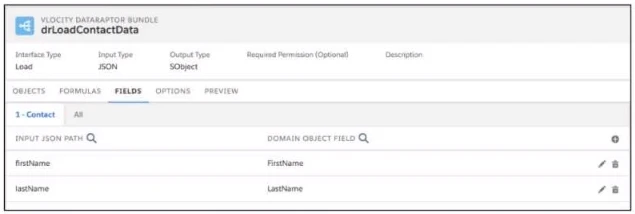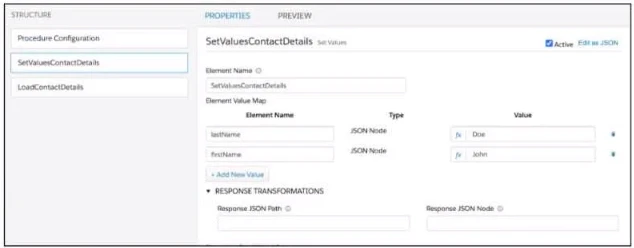In this scenario, how will the developer know which state will display?
When testing a FlexCard with multiple states that have conditional visibility, the state that appears first in the sequence closest to the top of the FlexCard canvas and has a true condition will be the one displayed. This ensures that the states are evaluated in top-down order and the first matching true condition state is shown to the user.
Based on best practices, how should the developer configure the Input JSON?
When building a DataRaptor Load for an Integration Procedure used in an OmniScript, the best practice is to copy the Input JSON from the OmniScript {Data} modal. This ensures that the JSON structure matches exactly what the OmniScript is expecting, reducing the chance of errors. The {Data} modal provides the current state of the data and is a reliable source for input data, ensuring consistency with the current transaction.
The developer creates an Integration Procedure to test the DataRaptor and is using a SetValues element in the Integration Procedure to set the first name and last name for the contact record. The DataRaptor and Integration Procedure are set up as shown in the exhibits below.



When the developer executes the Integration Procedure in Preview, the following error message displays: “Required fields are missing: [Last Name]”.
How should the developer address this issue?
The issue arises because the SetValuesContactDetails element in the Integration Procedure is setting the values for first name and last name, but these values are not being passed to the DataRaptor Load (drLoadContactData) which is responsible for inserting the Contact records. To correct this, SetValuesContactDetails should be added to the Additional Input of the DataRaptor Post Action (LoadContactDetails) in the Integration Procedure. This way, the input values for the first name and last name will be correctly passed to the DataRaptor, enabling it to process and insert the Contact record without missing required fields.
The account information must always be visible, and the contact information should only be visible as needed by the user.
What approach should the developer use to display the contact Information on the card?
To ensure the account information is always visible while allowing the contact information to be shown only as needed by the user, the most appropriate approach is to set the collapsible property on the block element. This way, the user can expand or collapse the contact information section as required, without affecting the visibility of the account information.
Two fields in an Integration Procedure that can use a function like CONCAT or DATEDIFF are in a Response Action within an Additional Input value field and in a Remote Action within a Remote Options value field. In a Response Action, these additional input values can use functions to modify the input data before it is returned. In a Remote Action, the remote options can include functions to format or manipulate the values being sent to the remote system. Other fields like Tracking Custom Data or Additional Output value fields are not typically used for such functions.